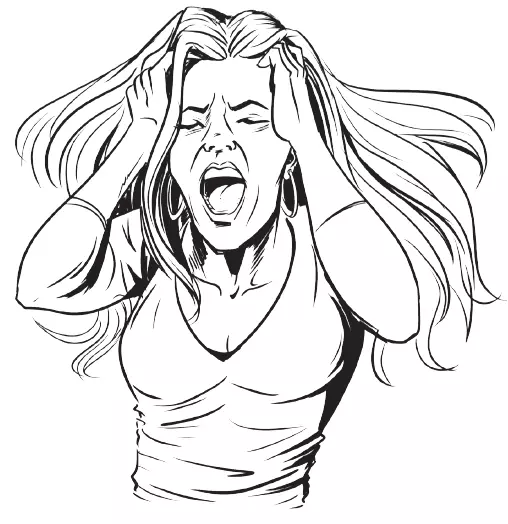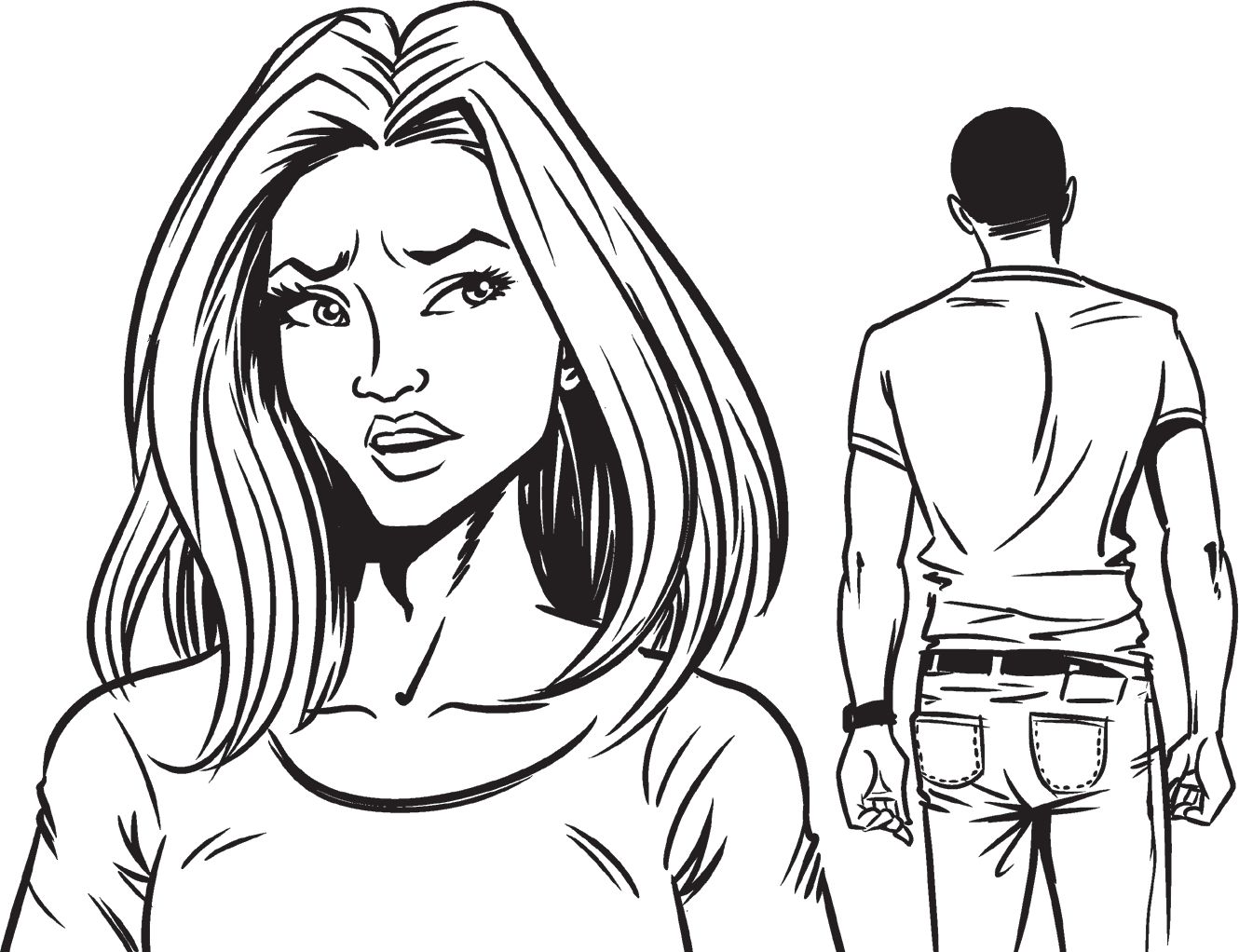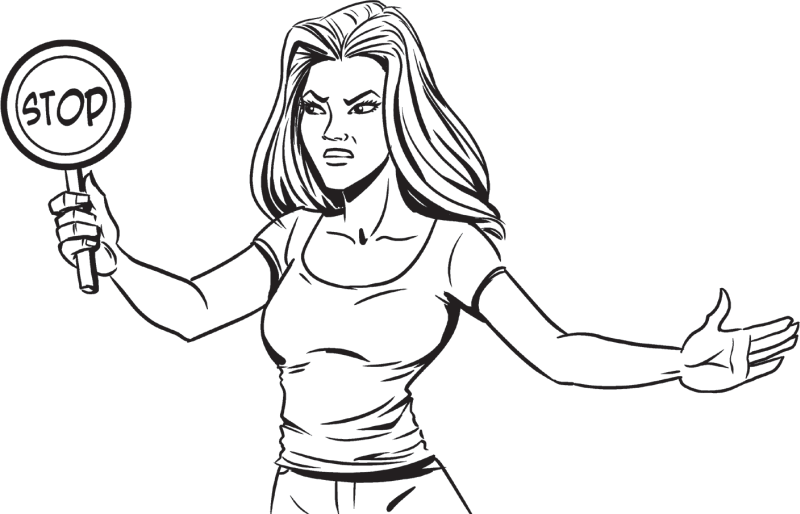6 Most Common Types Of Anxiety Disorders the Majority of People Suffer From Today
by Vlasta Kuster
The most common types of anxiety disorders that people suffer from today, according to ADDA (Anxiety and Deprression Associate of America), are
- specific Phobias (19 million adults),
- Social Phobia or Social Anxiety Disorder (SAD) (15 million aults),
- Post Traumatic Stress Disorder (PTSD) (7.7 million adults),
- GAD (6.8 millions adults in US),
- Panic Disorder (6 million),
- Obsessive Compulsive Disorder (OCD) (.2.2 million),
Anxiety disorders have a major impact on the quality of everyday life and besides this they also have a great impact on physical health. It is known that people who suffer from anxiety are also subjected to the fact that they also become seriously ill.
How could you not?
Anxiety means that the whole body is under stress. This does not only mean the stress we currently experience at work, in relationships and in uncertain economic situations ...
Anxiety for a person represents their entire load of stress, which has been registered in the person’s body.
People differ from one another in how intensely their negative experiences in life are imprinted into the body. However, it is true for all people that anxiety does not only emerge because of a current stressful situation, but because of the stress that has built up.
In other words, a person is overwhelmed by everything unpleasant in the past and besides this, fear of an uncertain future develops and the present moment is overloaded.
1. The Most Common of all Types Of Anxiety Disorders in the US today: Phobias
According to ADAA specific phobias are the most common type of anxiety disorder. in the US, affecting 19 million adults, or 8.7% of the U.S. population.
People develop a strong fear because of certain situations such as: some are afraid of dogs, others spiders and others are afraid of snakes..
Some are afraid of heights, others are afraid of enclosed spaces and others are afraid of driving on the highway, especially driving in tunnels. Furthermore, others are afraid of flying...
2. Social Anxiety Disorder (SAD)
2nd in the row of most common types of Anxiety Disorders in the US according to ADAA is Social Anxiety Disorder (SAD),...
...also known as social phobia, affecting 15 million adults, or 6.8% of the U.S. population.
People who suffer from social phobia develop a strong fear of other people.
This fear occurs in purely normal situations, such as family celebrations, visiting a theater performance or speaking to colleagues in public at the workplace...
Some people are afraid of looking at other people in the eyes and there may be a strong fear of authorities, for example; professors and managers.
People who suffer from social phobia are afraid of being laughed at and they are afraid of criticism and ridicule.
A deep fear of what others will think about them occurs in social phobia or even thinking that another person will do something harmful to them.
All these fears are exaggerated and people are usually aware that the fears are excessive but they cannot help themselves and their feelings are so powerful that they often stop them and prevent them from functioning normally.
3. Post-Traumatic Stress Disorder (PTSD)
7,7 million adults, or 3.5% of the U.S. population., suffers from PTSD according to ADAA.
People who have experienced an experience where their lives have been compromised suffer from this disorder. They could have been either injured or abused - physically or emotionally.
For example, these people were involved in
- sexual abuse or they had experienced
- horrors of a war or some kind of
- traffic accident or
- natural disaster.
Despite the fact that they now live in peace and that the tragic situation has long since passed, these people experience bad nightmares, their traumatic memories rotate night and day and they awaken sweaty and frightened ...
They have
- problems with concentration,
- with their memory and they find it
- difficult to sleep.
They have
- mood swings, they are
- prone to dependency and
- they become very difficult – on their own and in society.
They often experience attacks of rage and even aggression. They are wary of people and life in general.
4.Generalized Anxiety Disorder (GAD)
GAD affects 6.8 million adults in the US.
People with this disorder feel overly anxious about their health, they do not feel safe and they feel an intense fear of death. They are afraid that something will happen to them personally or to any of their loved ones. They also worry about losing a person who they love.
Anxiety is a combination of emotional problems and physical symptoms such as dizziness, nausea, muscle pain, an increased heartbeat, sweating, tingling in the body and insomnia ...
5. Panic Disorder

Panic disorder, according to ADAA, in the 5th place of the most common types of anxiety disorders, is the most extreme form of human feelings - both emotions and physical feelings.It affects 6 million adults.
There is a strong fear of death and a fear of going crazy ...
These intense, horrifying feelings of fear are accompanied by tingling in the body, sweating, dizziness, nausea, chills and a racing heart.
When people experience a panic attack
- for the first time, this is usually during sleep or
- completely unexpected in the middle of a peaceful day.
Since this attack is so intense and literally cripples people, most people immediately seek emergency medical assistance.
Doctors examine the person and ensure them that they are perfectly healthy since the blood and ECG tests usually do not show anything out of the ordinary during the attack and after the attack.
However, people are completely exhausted and have the feeling that they will die at any given moment.
6. Obsessive Compulsive Disorder
(OCD)
In the 6th place of most common types of anxiety disorders in the US, affecting 2.2 million adults, is Obsessive Compulsive Disorder (OCD).
OCD is characterized by two components - first, an obsessive thought arises which leads to a compulsive act.
The obsessive thought drives
- fear of an illness,
- the fear of losing a loved one,
- the fear of death or
- the fear of infection ... In order to alleviate this fear, people commit compulsive actions that can be very different.
Many people wash their hands and body excessively. The skin on their hands is completely cracked and dried because of excessive washing and disinfection.
Others excessively clean their living quarter. They are afraid of any object brought into their homes from the outside world - for example:
- the food they put into the fridge,
- the clothes they wore to work or at school and
- objects that were in contact with the apparently "contaminated" external world.
All this endless cleansing can use up all the person's energy and a couple of hours a day ...
Their safe living environment becomes narrower and narrower
Some people develop a need to
- excessively check things, for example; adults often check whether the door is locked or if all the light switches are turned off …
- children frequently stack up their workbooks into their backpacks ... or put out plates over and over again or fold their clothes over and over again.
They also put pillows on the couch in order to prevent something from happening to a loved one.
Others hop over two tiles on the floor in order to prevent something bad from happening.
An obsessive compulsive disorder always drives the fear of something bad happening and this fear is usually rooted in bad experiences from the past...
There are different sides of anxiety that are listed.
The common denominator for all these forms is that people suffer on an emotional and a physical but medical reports do not show any serious health problems.
The common denominator for all these different anxiety disorders is that there are
- intense negative feelings in the background,
which completely control a person's thinking, emotional health and physical well-being.
The common denominator for all these anxiety disorders is also that
- people are helpless,
- they immediately need help and
- they have difficulty tolerating such a state.
Vlasta Kuster, holds an MA degree in Basic Medical Sciences and uses her 3-month EFT therapy in her work to help people to do away with panic attacks and anxiety for good. She has more than 10-year experiences in EFT therapy and achieves at least 90% success in permanently eliminating anxiety and panic attacks. You may contact her through her website freeofpanic.com

